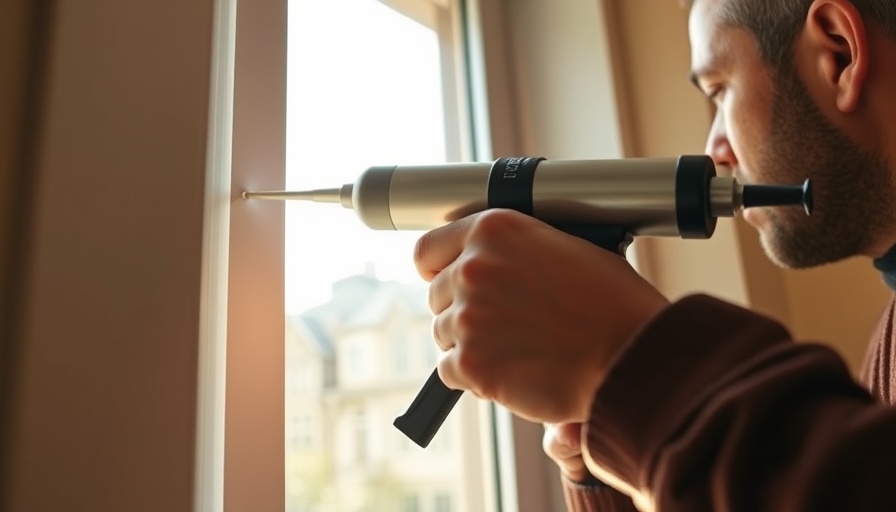
Why Caulking is Essential for Home Durability
Caulking your windows is more than a mere cosmetic upgrade; it plays a critical role in protecting your home from moisture and pests. Gaps and cracks can lead to significant water damage, resulting in costly repairs and a decrease in air quality due to mold growth. For homeowners looking to maintain the longevity of their homes, engaging in proper caulking techniques is vital.
The Essential Tools and Materials for Caulking
Before embarking on your caulking project, it’s important to gather the right tools. You’ll need a caulking gun, the appropriate sealant (whether it be latex, silicone, or polyurethane), a utility knife for precision cuts, and painter’s tape to ensure clean lines. Utilizing these materials effectively can lead to professional-looking results that enhance the aesthetics and functionality of your windows.
Common Mistakes to Avoid When Caulking
Despite good intentions, many DIYers fall into common traps that diminish the quality of their caulking efforts. One major mistake is failing to clean the surface before application. Dirt or moisture can interfere with adhesion, compromising the seal's effectiveness. Additionally, applying too much or too little sealant can create uneven lines or gaps, resulting in further maintenance down the road. Understanding these pitfalls isn't just crucial for aesthetics; it's an investment in your home's integrity.
Step-by-Step Guide to Caulking Windows Like a Pro
1. **Preparation:** Begin by removing any old, damaged caulk using a utility knife. Scrub the area clean and ensure it's completely dry.
2. **Taping:** For edges that require clean lines, apply painter’s tape to the areas adjacent to where you’ll apply the caulk.
3. **Application:** Load your caulking gun and apply an even bead of caulk at a 45-degree angle, ensuring to fill gaps adequately without excess.
4. **Smoothing:** Use a caulking tool or your finger to smooth the bead, creating a uniform surface while ensuring it makes full contact with both the window frame and the wall.
5. **Removing Tape:** Carefully remove tape before the caulk dries to ensure clean lines.
6. **Curing:** Allow the caulk to cure as per the manufacturer's recommendations for optimal results.
The Future of Window Insulation: Trends to Watch
As technology in home improvement evolves, new materials and techniques are emerging that promise not only better aesthetics but enhanced functionality. Innovations in eco-friendly caulks and thermal insulation materials are becoming more popular, emphasizing the need for sustainable practices in home maintenance. Contractors and homeowners alike should stay informed about these advancements to ensure their investments yield the best possible outcome.
Expert Perspectives: What Professionals Say About DIY Caulking
It's always beneficial to learn from the pros. Experts recommend that DIYers consult instructional materials or videos specific to their product, as there can be significant differences in how various sealants behave. Furthermore, many contractors advise against sealing large gaps with traditional caulk and instead recommend foam insulation or other appropriate materials for best results.
Evaluating Cost-Effectiveness: DIY vs. Hiring a Pro
Before deciding between a DIY approach and hiring a professional, evaluate both time investment and potential costs. While DIY projects can save money, the risks associated with improper application may lead to future expenses that could outweigh initial savings. Understanding these dynamics is crucial for making informed decisions about your home project.
Conclusion: Elevate Your Home Maintenance with Smart Caulking
By following these dos and don’ts of caulking windows, homeowners can enhance their living spaces while protecting their investments. As emerging technologies continue to shape the home improvement industry, staying informed and educating yourself on best practices will keep your projects both efficient and effective. Whether you choose to tackle the job yourself or engage a professional, the key takeaway is to approach caulking with the seriousness it deserves.
 Add Row
Add Row  Add
Add 




Write A Comment